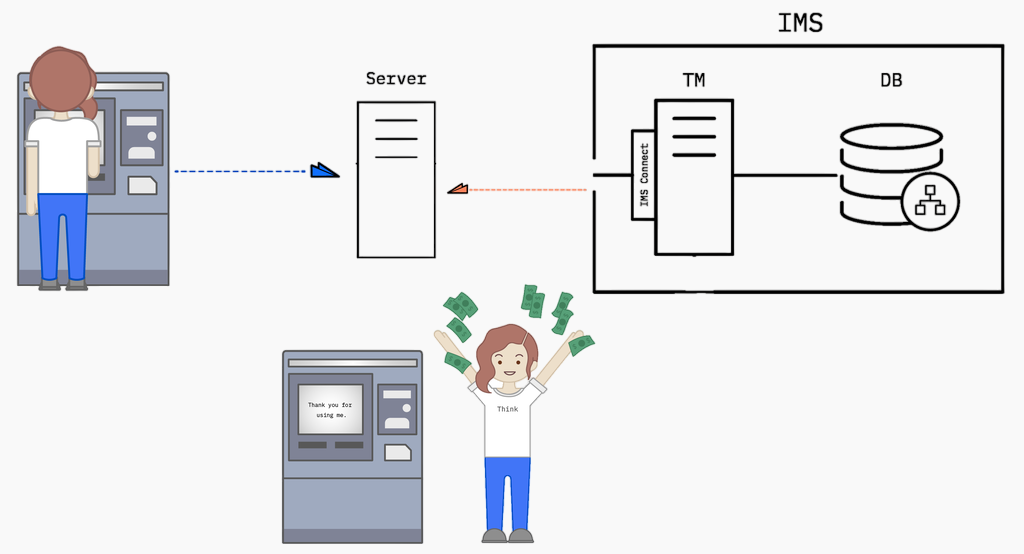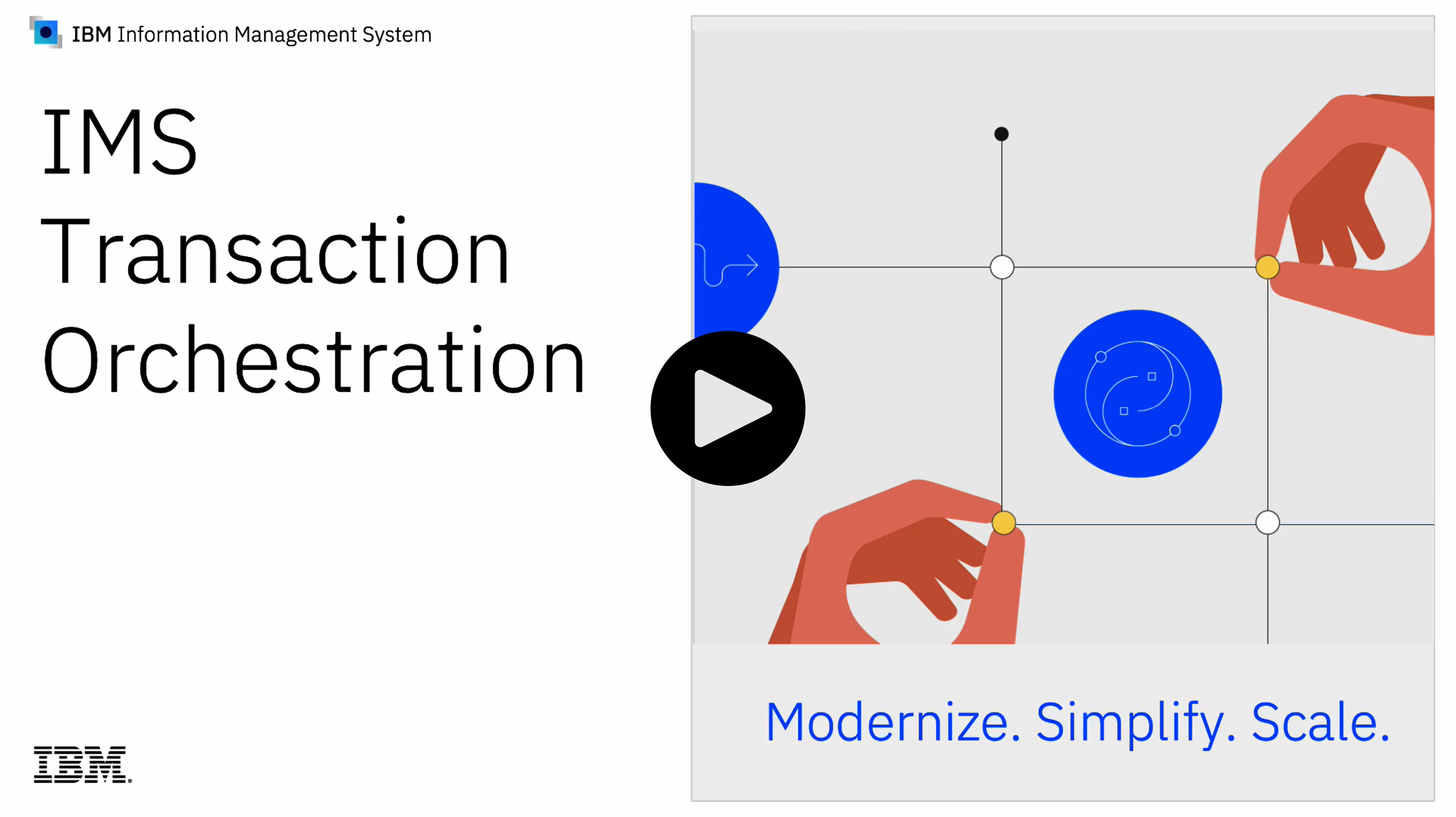Introducing IMS Transaction Manager
IMS Transaction Manager
Speedy transactions
The IMS Transaction Manager receives messages from any platform, usually via TCP/IP through IMS Connect, puts them on the message queue where an application program can retrieve it.
Think about getting money from an ATM or bank. The bank uses IMS DB to store customer data and IMS TM to quickly process deposits, withdrawals, and queries.

Ways to work
Use Red Hat® Ansible® and Red Hat® OpenShift® through digitally transformed ways of working, developing, and updating critical data-driven applications.
The Ansible® for IBM Z® product offers lots of use cases, capabilities, and tools to automate functions of IMS, such as DBRC administration or IMS catalog management, all by using scripted Ansible playbooks.
Ways to connect
Take advantage of not just TCP/IP but RESTful APIs that access IMS™ applications and data in minutes. Transactions might be issued from z/OS environments or distributed applications that use TCP/IP to communicate with IMS.
Use IMS Connect to provide high performance TCP/IP communications between multiple IMS Connect clients and IMS systems.
What’s new in transaction management?
Transaction orchestration
OTMA transaction orchestration enhancement allows OTMA to identify and correctly route an external service response from IMS to a waiting IMS Connect client.
If you're getting timeouts with CM0 send and receive messages from IMS Connect or z/OS Connect clients, take advantage of transaction orchestration.
Start by enabling the OTMA TMANORCH flag in IMS Connect and then setting the TRANORCH=YES parameter in the OTMA client descriptor, and you're on your way.





